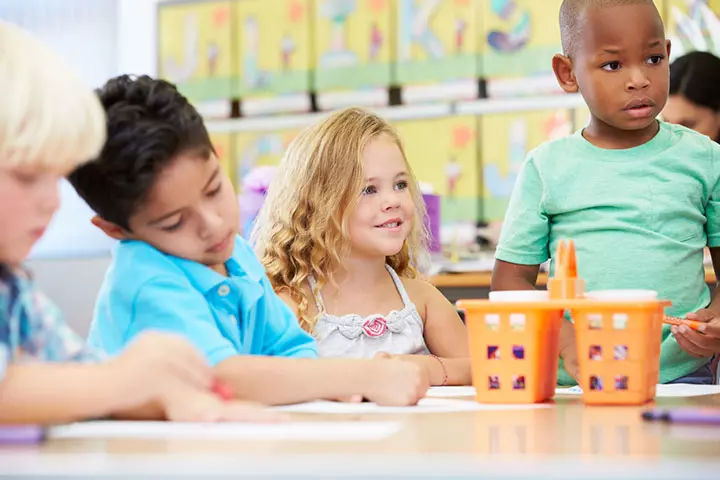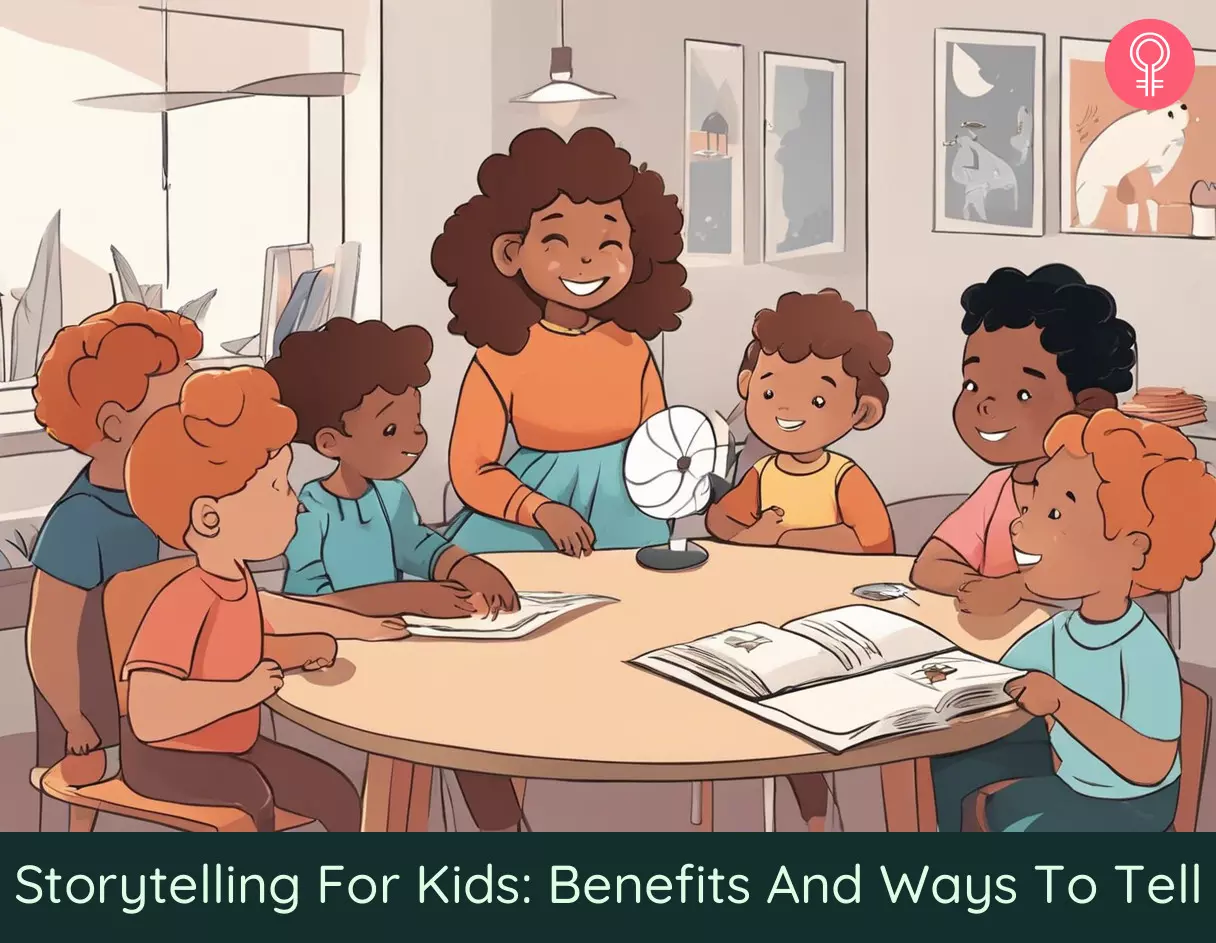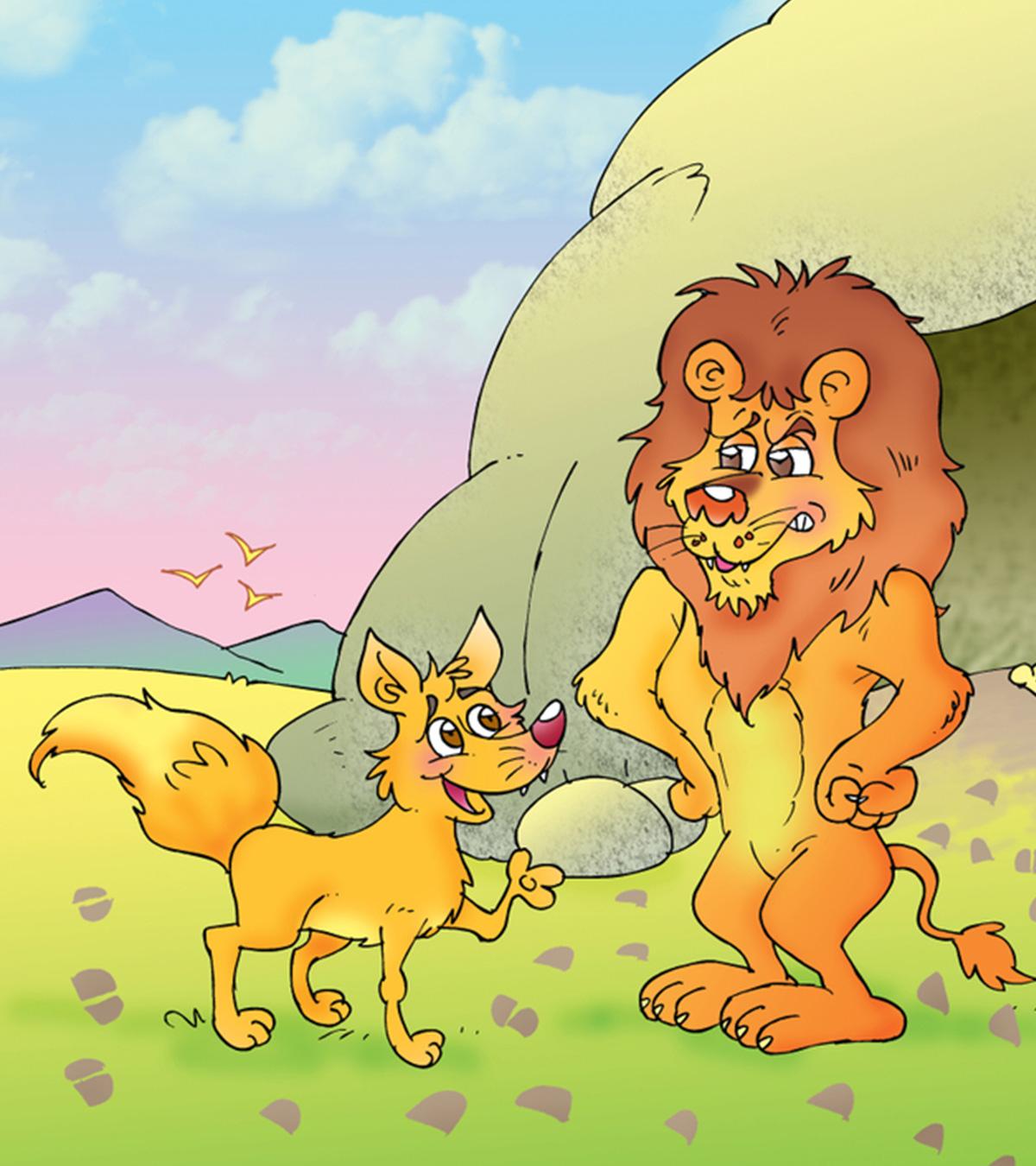
Image: Shutterstock
There was a time when children used to spend their days listening to mythical legends, fables, and moral stories. Perhaps that is why storytelling for children is considered a great way to teach them several things. Whether the stories featured enchanting places or mysterious creatures, they had a captivating effect that kept the children hooked and provided great entertainment. The plot twists, fascinating settings, and dramatic characters were all ways to boost their imagination and curiosity. Continue reading to discover ways to become an engaging storyteller for your children and others.
Key Pointers
- There are various types of storytelling, including verbal, visual, written, and digital forms, each with unique characteristics and historical significance.
- When telling stories to children, it’s essential to understand their preferences and create a message that resonates with them, using creative language and expressive storytelling techniques.
- Storytelling offers numerous benefits for children, including instilling virtues and improving vocabulary.
- Storytelling can be incorporated into daily routines, such as bedtime or mealtime
What Is Storytelling?
Storytelling is a creative form of expression where imagination is translated into words.
It requires interactive words and actions with variations in tone, to narrate a story that keeps the listeners hooked until the end. A good storyteller also encourages the listener’s active imagination, letting them become the co-creators of the tale.
Storytelling can take various forms such as dance, puppetry, musicals, comedy, poetry, and more. It requires patience, persistence, and multiple trial-and-error attempts to master this skill (1).
What Are The Types Of Storytelling?
Storytelling is a diverse and dynamic form of art that can be shaped into various types.
- Verbal storytelling: It is one of the ancient methods of storytelling, where the narration is done through singing, chanting, and reciting poetry. Also, oral storytelling serves to share narratives from their experiences.
- Visual storytelling: It is about sharing stories through ancient cave paintings or depictions of figures on cave walls. In ancient Egypt, this technique was used for communication, showcasing sounds and characters through pictographic symbols.
- Written storytelling: With the evolution of societies, oral and visual storytelling were replaced by written forms in different languages with the invention of the printing press.
- Digital storytelling: The emergence of technology has significantly altered the storytelling landscape. Television, film, and radio have expanded the reach of talented storytellers, providing them with unprecedented platforms and spurring the development of inventive and novel storytelling approaches.
- Interactive storytelling: It is a fun way for children to actively take part in the direction and outcome of the story. You can implement it through interactive apps, live performances, or group sessions.
However, new technologies continue to shape new forms of storytelling and are not limited to the above-mentioned types.
How To Tell Stories To Children: 5 Easy Ways Of Narrating A Story
Not knowing how to tell a story to a child can be frustrating, especially when your little one wants a bedtime story every night.
Young minds are always exploring something, are bored easily and move from one topic to another so quickly that you struggle to catch up. So how do you capture the child’s attention and get them to stay with you, without boring them?
Here are a few tips to help you with that (1) (2) (3).
- Understand the listener: The first and foremost step is to understand your audience: knowing what they want will help you create and narrate a compelling story. So ask yourself what your child likes: superheroes, princes and princesses, aliens, or historical figures?
Image: IStock
- Construct your message: The next step is to define a message that you want to convey through your story. What should the children take away from the story? Is there anything specific you want them to learn from this story? Build your stories based on these questions.
- Include creative words: The usage of innovative and impressive vocabulary works best when you are narrating a story to children. But limit the usage of words that are difficult to comprehend for a child.
- Expressive style: Keep the listeners enamored by telling the story eloquently and dramatically. Be energetic, get emotional, and go with the flow. Create a thrilling experience filled with suspenseful and surprising incidents if the story warrants it. Using a picture book with elaborate illustrations is an added asset to bind the child’s interest and make the storytelling more fun.
Image: IStock
- Timing: The importance of timing in storytelling and the effect it can have on the children cannot be stressed enough. Whether it is a campfire story, bedtime story, or just a humorous one to narrate on a rainy day, it has to be appropriate and suitable for the mood and time of the day to ensure the child’s optimum engagement in the storytelling process.
“Should we really do so much? Is it really necessary?” If this is what you are thinking, then we would say “Yes,” because of the benefits storytelling has.
 Do remember
Do remember15+ Benefits Of Storytelling To Kids
Besides being entertaining, stories offer a myriad of benefits for children and aid in their overall development.
Whether you’re reading from a storybook, narrating a personal experience or recreating their favorite movie’s plot, your storytelling can create a lasting impact during their childhood.
Here are a few more benefits of storytelling in childhood (1) (2) (3) (4) (5):
- Instills virtues and morals in children: Honesty, truthfulness, gratitude, and many such attributes can be ingrained in them through compelling stories.
Image: Shutterstock
- Understanding cultures: Stories can be used to keep the children connected to their roots and make them understand their own history and traditions. Stories, like cultures, vary from one land to another. Stories from the homeland and foreign places will help the child appreciate the diversities existing in this world.
- Improves listening skills: To enjoy the story thoroughly, one must pay attention to the narrator so that nothing is missed out. A good session of storytelling can improve a child’s listening skills.
- Inspires curiosity: Pausing a story when it gets most interesting makes the listener eager to know what happens next. It makes the children curious and encourages them to ask questions, which also helps in their learning, growth, and development.
 Expert says
Expert says- Kindles imagination: It is one thing to be curious and another to become imaginative. A well-narrated story takes you to various parts of the world, both real and mythical. Stories with an element of fantasy and magic help in improving the imagination and creative thinking of the listeners.
- Improves concentration: Listening to stories helps improve the attention span and concentration levels too.
Image: IStock
- Introduces new vocabulary: When you include new terminology every time you narrate a story, children learn them and try to understand the meanings of these unfamiliar words. This helps them improve their vocabulary.
- Enhances the learning process: Stories have a unique way of improving the learning process, both at an academic and personal level also. Storytelling can engage the children in a creative learning process that makes understanding even the toughest of topics easy.
- Develops emotional intelligence: This is the key to success at various stages of human life. The development of emotional intelligence refers to the awareness of and control over one’s emotions and expressions. Stories help you in achieving that in a simple yet beautiful manner.
- Teaches empathy: The ability to think for others, placing yourself in other’s shoes, and understanding their feelings makes one a better individual. Stories can teach you to become more empathetic towards others and be sensitive to their needs.
- Improves communication: Storytelling can enhance communication skills for kids and help in better articulation. Reading or listening to stories helps children express themselves more easily, resulting in lucid conversations.
- Lowers stress and anxiety: Stories not only entertain, but captivate you as they transport you into different worlds in the imaginary realm. Listening to such delightful stories and experiencing the magic and fantasy in their minds can lower the stress and anxiety levels in children.
Image: IStock
- Sharpens memory: Whether a story is long or short, kids tend to remember the plot, characters, and other aspects of it for as long as they can. This is good for the child’s memory skills but can prove disadvantageous to the storyteller, as the kids will remember if you are repeating a story. (Wink! Wink!!)
- Makes academic learning easier: Certain academic subjects have a direct or indirect connection to various stories. This is one of the many ways in which stories can make academic learning easier for children. The creative thinking ability that they develop by listening to stories also makes academic learning more accessible.
- Encourage a budding storyteller: Listening to intriguing stories may inspire children to one day pen down their own narrative or become a storyteller themselves.
- Facilitates family bonding: Storytelling sessions create fun moments for your family to connect and have a meaningful time together.
When To Tell Stories Or Read To Children?
Children may begin to explore books with pictures or illustrations from an early age. Storytelling, reading, or even singing may be done before bedtime. Reading to your child for a few minutes before bedtime enables you to connect with your child. It also sets a routine to comfort them before sleep. However, you can also practice at other times, such as during mealtime or changing diapers (6). While reading, make sure you read with expressions and a clear voice or by using different sounds to make it more interesting for your baby. You could also incorporate storytelling into your daily routines, such as during car rides or family gatherings, to enrich your children’s experiences.
Illustration: Storytelling For Kids: Benefits And Ways To Tell
Image: Stable Diffusion/MomJunction Design Team
Frequently Asked Questions
1. What are the four elements of good storytelling?
The four elements of good storytelling include structure or the beginning, characters, conflicts, and resolution or closure
2. How does storytelling promote emotional development?
Storytelling may promote a child’s emotional development by teaching them how to express themselves. It acts as a language of expression for children.
3. What is the difference between storytelling and story reading for kids?
Storytelling may not involve written or printed text and may be spontaneous, while story reading means giving voice to something already written.
4. How does storytelling promote cognitive development?
Storytelling promotes a child’s cognitive development by improving language skills, stimulating imagination and creativity, enhancing memory and concentration, and promoting emotional intelligence. Storytelling also helps build memory and concentration skills, as well as promotes empathy and understanding of others’ emotions.
The benefits of storytelling for children are innumerable. It is an art devoid of technology and is a great way to indulge in quality time with your children. You may choose the genre your child loves the most from the wide range of topics available. While mythological and classic fairy tale stories are most interesting and impressive for children, you can also choose inspirational stories with morals for kids. Choose the right time and story, use creative and gripping words to make your narrative intriguing for your child, and watch them plunge into the amazing world of stories filled with adventure, education, and entertainment.
Infographic: How Storytelling Positively Impacts Children
Storytelling is a powerful tool used for centuries to inculcate important morals and values in children. The infographic below highlights the many advantages of storytelling for children. So give this infographic a read and also share it with fellow parents.
Illustration: Momjunction Design Team
References
- What Is Storytelling?
https://storynet.org/what-is-storytelling/ - Easy ways to tell stories to children.
https://nalibali.org/how-to/easy-ways-to-tell-stories-to-children - Storytelling – benefits and tips.
https://www.teachingenglish.org.uk/professional-development/teachers/managing-resources/articles/storytelling-benefits-and-tips - The Importance of Storytelling and Story Creation.
https://www.pathstoliteracy.org/playing-words-why-it-important-importance-storytelling-and-story-creation/ - Learning Vocabularies Using Short Stories at Primary School: Students’ Perception.
https://files.eric.ed.gov/fulltext/EJ1266152.pdf - Reading Books to Babies.
https://kidshealth.org/en/parents/reading-babies.html
Community Experiences
Join the conversation and become a part of our nurturing community! Share your stories, experiences, and insights to connect with fellow parents.
Read full bio of Dr. Caroline Hexdall
Read full bio of Harshita Makvana
Read full bio of Deepa Thomas
Read full bio of Trisha Chakraborty




























